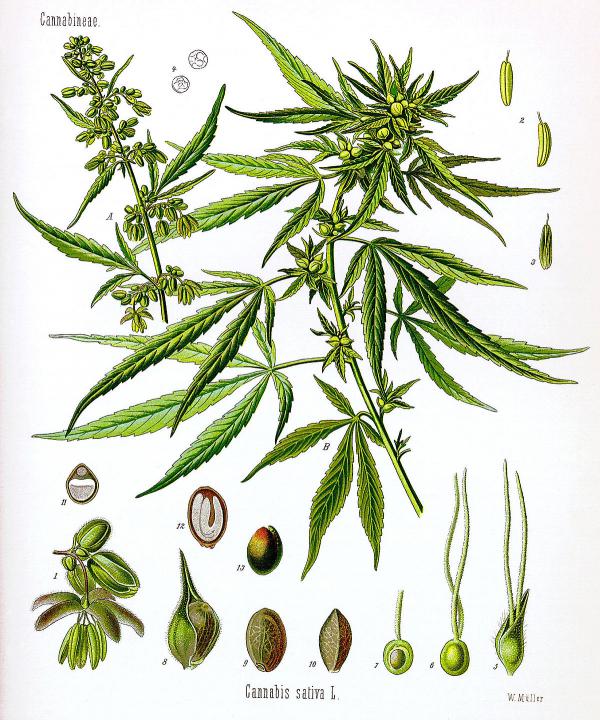Chemotype
The most reliable method for estimating the effects of cannabis is by determining its chemotype. The taxonomy of organisms and plants based on the presence of chemical substances they produce is called chemotaxonomy. Cannabis is divided into five different chemotypes according to amounts of major cannabinoids.
The scientific research of genetic differences between the strains with high THC content and those with higher CBD content (for example the industrial hemp) has been going on for only a little over a decade. DNA testing can reveal genetic affinity, and thus assess potential effects with great accuracy.
Five main chemotypes
In 1973, scientists identified three basic cannabis chemotypes: chemotype I with high THC content and negligible CBD content; chemotype II with medium content of both THC and CBD; and chemotype III in which only the content of CBD is prominent, an example of which is hemp. Later, two other types were identified (some breeders and researchers distinguish even more types): chemotype IV with high content of both THC and CBD, and with THCV content over 5%; and lastly chemotype V which containing also CBGM (cannabigerol monomethyl ether).
CBGA: the mother of two main cannabinoids
Today we already know that cannabinoids both in the medicinal strains and in hemp are synthesized in the plant from one cannabidiolic acid which serves as their precursor – cannabigerolic acid (CBGA). Certain genetic differences enable some strains to process CBGA into tetrahydrocannabinolic acid (THCA) which then through heat, light and time transforms into THC; other strains process CBGA into cannabidiolic acid (CBDA) which later turns into CBD. This genetic difference lies in two alloenzymes which are formed from two dominant genes located at the same position on the chromosomes of cannabis. These alloenzymes then transform CBGA either into THCA, or CBDA.

